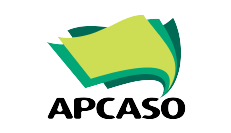
Country Coordinating Mechanism (CCM)
CCM Committees
To be effective in performing its functions, the CCM often creates executive and technical committees that support decision-making processes within the body. The Executive Committee is often composed of the Chair or Co-chairs and the Vice-Chairs, and other officers of the CCM. Technical Working Groups are thematic and/or disease-specific (for example, the Malaria TWG).
CCM Secretariat
Fund Portfolio Manager and the Country Team
Local Fund Agent
National Disease Programmes
Funding requests need to be aligned with country strategies and/or investment cases on HIV, TB, and malaria, making national programmes important to engage with, as they and their attached agencies or facilities have roles in operationalising grant interventions, gathering strategic information, costing programme activities, or raising resources to co-finance programmes.
Ministry of Health
The Ministry of Health (MOH) often sits in the CCM as members or as part of the leadership, approves country strategies for the three diseases, and is involved in developing investment cases.
International Agencies
International development organisations like WHO, UNAIDS, and other bilateral donors, are part of the CCM as members and often provide technical support to country programmes.
Programme Implementers
Civil Society, Community Groups, and Key Populations
Civil society, community groups, key population networks, including organisations that represent those affected by or living with the disease, play a prominent role under the Funding Model. They have representation within the CCM, and their meaningful participation in ongoing community dialogues is necessary to ensure robust country strategy and programmes. Note that there are also key population regional networks and regional civil society platforms like APCRG whose mandates include Global Fund-related technical assistance and information dissemination.
Technical Assistance Providers
Within countries, there are groups that offer technical support to ensure the effectiveness of disease programmes and/or to assist civil society, communities, and key populations in engaging in Global Fund processes or in their respective disease responses. These TA providers include the Technical Support Mechanism (TSM) of UNAIDS, the L’Initiative, Rollback Malaria(RBM) Partnership, and the Stop TB Partnership.

